Differences between TV Wall Mounts and TV Floor Mounts
CLICK HERE TO CHOOSE THE TV STAND THAT SUITS YOU AT ELECTRONIO.GR
With advances in display technology, new TVs are thinner and lighter than ever, making them easier to mount on the wall. However, floor TV stands also have their advantages.
When choosing whether to wall mount or purchase a floor standing TV stand, there are many things to consider. Which style suits your room best?
TV WALL MOUNT
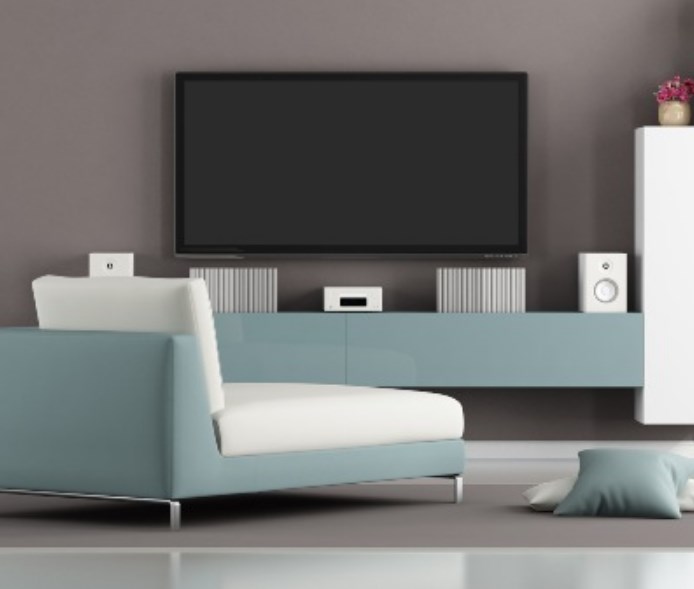
Most new flat screen TVs are designed for wall mounting, with default holes on the back for attaching to stands and brackets.
All of these are designed to a standard - called the VESA Mounting Interface Standard - which means you can get a certain size bracket and be sure it will fit. Usually, the TV box will state the type of stand you need.
ADVANTAGES
The most important advantage of wall mounted TVs is the space it saves you. Because they're so thin and can be secured so close to the wall, they don't stick at all - meaning you don't need to take up floor space with a table or stand.
Wall-mounted TVs are used as the focal point of a room and give a stylish and modern finish. Cables can be hidden, making the room less cluttered and reducing the risk of falling over them.
Bases are much easier to install than people think. It usually takes less than an hour to set up and connect everything. A step-by-step guide will come with the base, as well as plenty of online videos and how-to guides.
Wall-mounted TVs also make it easier to achieve optimal viewing distance and reduce the potential for eye or neck strain. You can mount the monitor at a height that suits you.
DISADVANTAGES
The main downside with a wall-mounted TV is that it takes a bit more effort to set things up than with a TV stand.
It is vital that the TV is properly attached and the bolts are secure, or you could end up with an expensive mess on the floor. If you live near a train station or an area that has a lot of construction work, the vibrations could increase the risk of it running loose. However, a properly connected TV with a suitable stand or bracket should not cause any problems.
A variety of wall mounts and brackets are available. Some of these are relatively expensive and, depending on the type you choose, can cost almost as much as the TV itself.
If it is placed too high on the wall, it may be uncomfortable to watch TV while looking at the screen. It may also be in direct sunlight from nearby windows.
You can arrange to hide electrical wires, but you will need to use an electrician to install wires in the wall, which is an additional cost.
If you have additional devices such as a sound system, DVD player or video game console, you can lose the cluttered look as all the audio and video cables will be visible. You'll also need something to put these set pieces on.
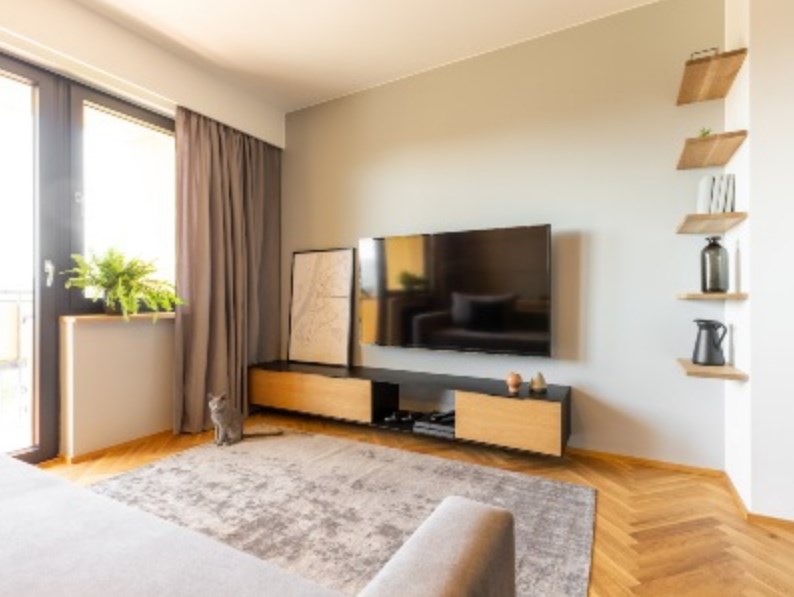
FLOOR TELEVISION STAND
ADVANTAGES
Having a floor TV stand offers more storage space and can be more practical. Choose an attractive table design with drawers or cabinets that will add to the look of the room, giving you space for DVDs, video games and controllers. A stand will also hide any cables and act as an extra shelf for your surround sound system, console or set-top box.
A TV stand gives you easy access to all cables and sockets in case you need to change them.
DISADVANTAGES
Floor TV stands take up more space than wall mounts, so if you have limited floor space, they are probably not the best choice. Balancing on a table also means that if someone knocks over them, the TV could fall.
If you have children or pets, a TV wall mount may be a better idea. Fingerprints, dog snot and run-ins can threaten your TV - either with smudged marks or damage.
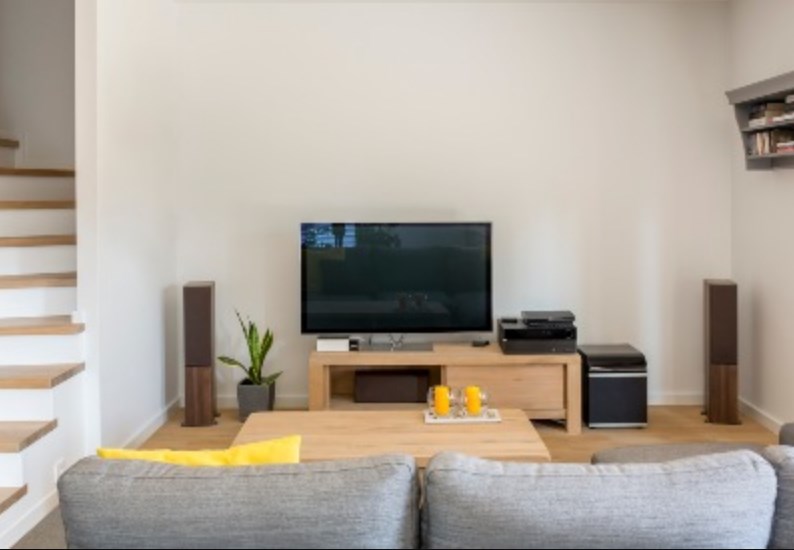
There are many styles of TV wall mounts, ranging from basic fixed designs to those with complete flexibility.
When choosing your stand, you need to consider exactly what you want it to do: do you want to adjust your TV for different viewing positions, change the angle of the screen or have it too close to the wall?
TV stands vary in price, from less than €10 to over €100
The most basic and cheapest style of base available, flat bases are also the easiest to install. These hold your TV close to the wall, just an inch away, but have no angle or tilt capabilities. Another issue is that it can be difficult to change cables.
Plasma TVs work well with this type of mount as they have the widest horizontal and vertical viewing angles - perfect for combating lack of adjustment.
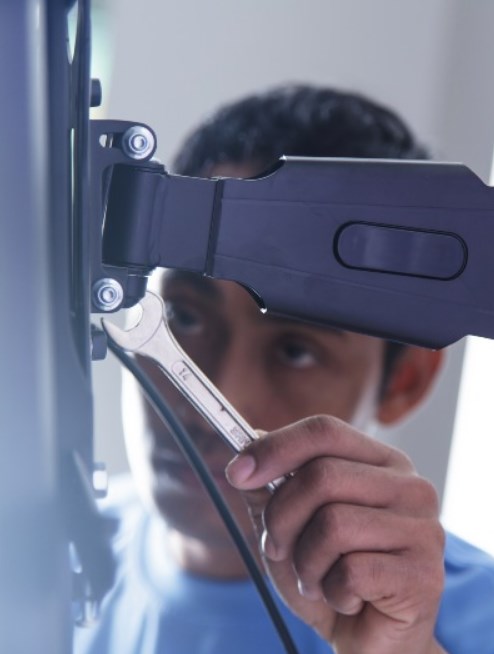
Tilted TV wall mounts cost more than the basic type, but are just as easy to install. They work by having a pivot in the middle of the mounting bracket, allowing you to change the vertical angle of the screen. Even if you lie on the floor, you will have a good view. It also helps compensate if your TV position is above the optimal viewing level.
You can adjust models with swivel bases in a similar way, but from side to side. If your room has more than one sofa and viewing point, swivel bases are a great option.
These styles don't sit as close to the wall as a basic base, but are still a few inches away at most. This style looks great placed over a fireplace or high up on a bedroom wall. The angle adjustment helps minimize screen reflections from windows or lights, which can be a problem for some plasma and LCD TVs.
Tilting the TV wall mount costs more, but is just as easy to install.
Full-motion stands have a folding arm between the wall and the TV.
The most sophisticated and versatile type of mount, articulated mounts provide the most tilt / swivel flexibility. The arm folds back so the TV can be close to the wall when not in use. However, when using it, you can move the TV several inches off the wall, which allows for more range of motion.
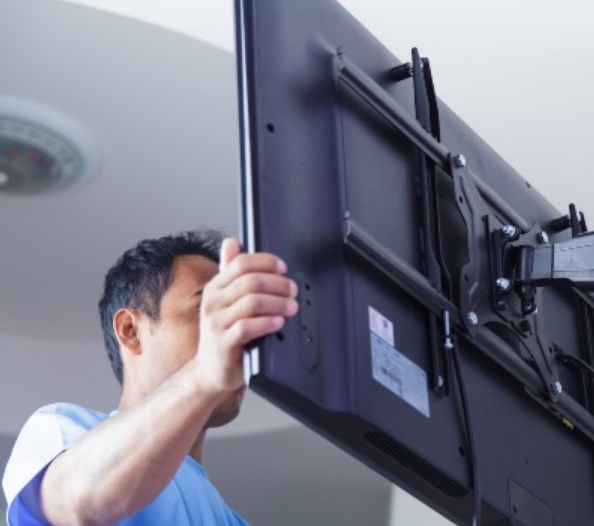
Recent posts Recent posts
Bottom my account
Popular Categories
© 2004-2024 Electronio. Κατασκεύη eShop CS-Cart Hellas
This site uses cookies to store information on your computer. See our cookie policy for further details on how to block cookies.
Analytical cookies for us to better craft the user experience based on your page view experiences.
